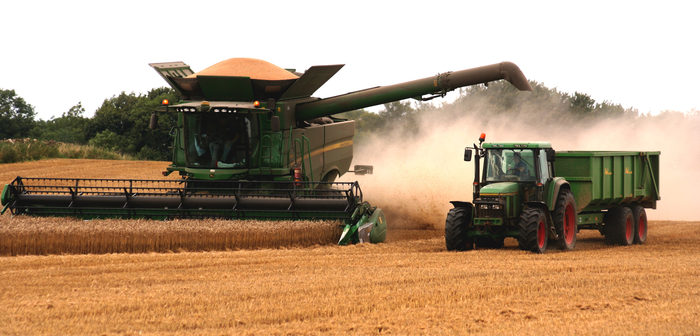Wheat
There was a sharp sell-off in all wheat markets since the start of the month as forecasts of a bigger Russian crop and the perceived freeing up of Ukraine grain exports had the prices on the back foot, but in the last week, the sentiment has started to change.
Whilst the bumper Russian harvest has brought some equilibrium to the global wheat balance sheet, the market is now getting nervous about worldwide and, in particular, EU corn production.
The Pro Farmer crop tour is seeing US Mid-West corn crops that don’t look as well as expected and this combined with the ongoing issues with the European corn crop has supported wheat prices.
The European Union’s crop monitoring service MARS lowered its forecast of the EU’s average grain maize yield this year to 6.63 tonnes per hectare (t/ha) from 7.25 t/ha projected last month, 16% below the 2021 level. This story on EU maize is picking up pace and as previously discussed the wheat balance sheet cannot afford to absorb any additional demand from the feed/ethanol sector.
Closer to home, the size and quality of the UK domestic crop is starting to become clearer. We have had better than expected yields in the North and we are now putting the UK crop at between 15.7mln and 16mt with an estimated exportable surplus of 2mt.
By the end of last week 92% of the GB harvest was complete, well ahead of the five-year average. The winter wheat yield is currently averaging 8.2 – 8.6t/ha. For crops grown on lighter soils, yields have been ranging from5.0 – 11.0t/ha. Yields of crops grown on heavier more water retentive soils are slightly higher ranging from 5.0 – 14.0t/ha.
Milling wheat varieties are yielding 6.5 – 12.0 t/ha, with feed wheat ranging between 7.0 – 14.0t/ha. Yield differences are strongly linked to crop establishment and water retention capabilities of the soil. Specific weights are varying between 78 – 83kg/hl on farm, with the GB average currently at 78 – 80kg/hl.
Hagbergs falling numbers are ranging between 280 – 310 seconds and are averaging around 300 seconds. Hagberg falling numbers over 250 seconds are optimum for milling wheat varieties destined for breadmaking. Protein levels are varying between 11.0 – 13.5% on farm, with the GB average currently at 12 – 13%. There is variation in protein levels due to the extended dry period following nitrogen application, limiting the uptake for some crops, and impacting protein levels. The protein issues are driving some significant differentiation in premium between 12+ % Group 1 and every other grade.
Finally unsurprisingly there has been very little grain drying has been required this year. Cooling grain is a greater priority, to enable safe storage and transport. The GB winter wheat crop is currently averaging 12.9 – 13.7% moisture.
We are seeing some underlying export demand for UK wheat, but bids are currently €4/5 behind the offers, and whilst we have some great quality for North Africa we are currently lacking demand. Hopefully, the upcoming tenders will yield some business.
In summary, the market feels like it should have a positive bias, but as ADM says it remains stuck in the same recent range. Basis Nov22 ICE we are trading in the £255/275 range and without some fresh news, this market looks likely to trade within this price band for now.
Oilseed rape
The 2022 GB oilseed rape harvest is now officially completed well ahead of the five year average. Yields have ranged from 2.1 – 5.2t/ha on farm, with average yields at 3.2 – 3.6/ha. As has been widely predicted and reported throughout the year the highest yielding crops were established well in the autumn in moisture retentive oil and so had minimal damage from pests and disease. Cabbage stem flea beetle, in particular, caused less damage to the crop this year and so has had less of an impact on yields than in previous years.
The oilseeds market has moved higher this week, partly due to the annual US pro-farmer Crop Tour shoed below average pod counts throughout the States which has led to questioning USDA’s forecast output for the 2022 season. Rumours of drought in China has also forced the market upwards.
The fresh upturn in crude oil prices is fuelling talk of a 2023 recession, but as OPEC are now threatening to tighten oil supplies and with the threat of Russia cutting supplies to the EU, the market is now back over $100/barrel, which should help to underpin the biodiesel demand as we go into the winter.
A combination of higher soy prices and the jump in crude oil prices have added support to the European rapeseed price, with the MATIF rising from last weeks six-month low.
The recent rains in parts of the UK have helped farmers trying to get in next years crop. Despite the dry conditions growers are still keen to plant oilseed rape this year and sales are still reflecting this desire although the weather could certainly help more.
ADM are saying that conclude oilseeds are a tough market to call and we need to see some hard data from the US soy harvest and understand how the chines market develops ands so prices are going to remain volatile for the foreseeable future.




